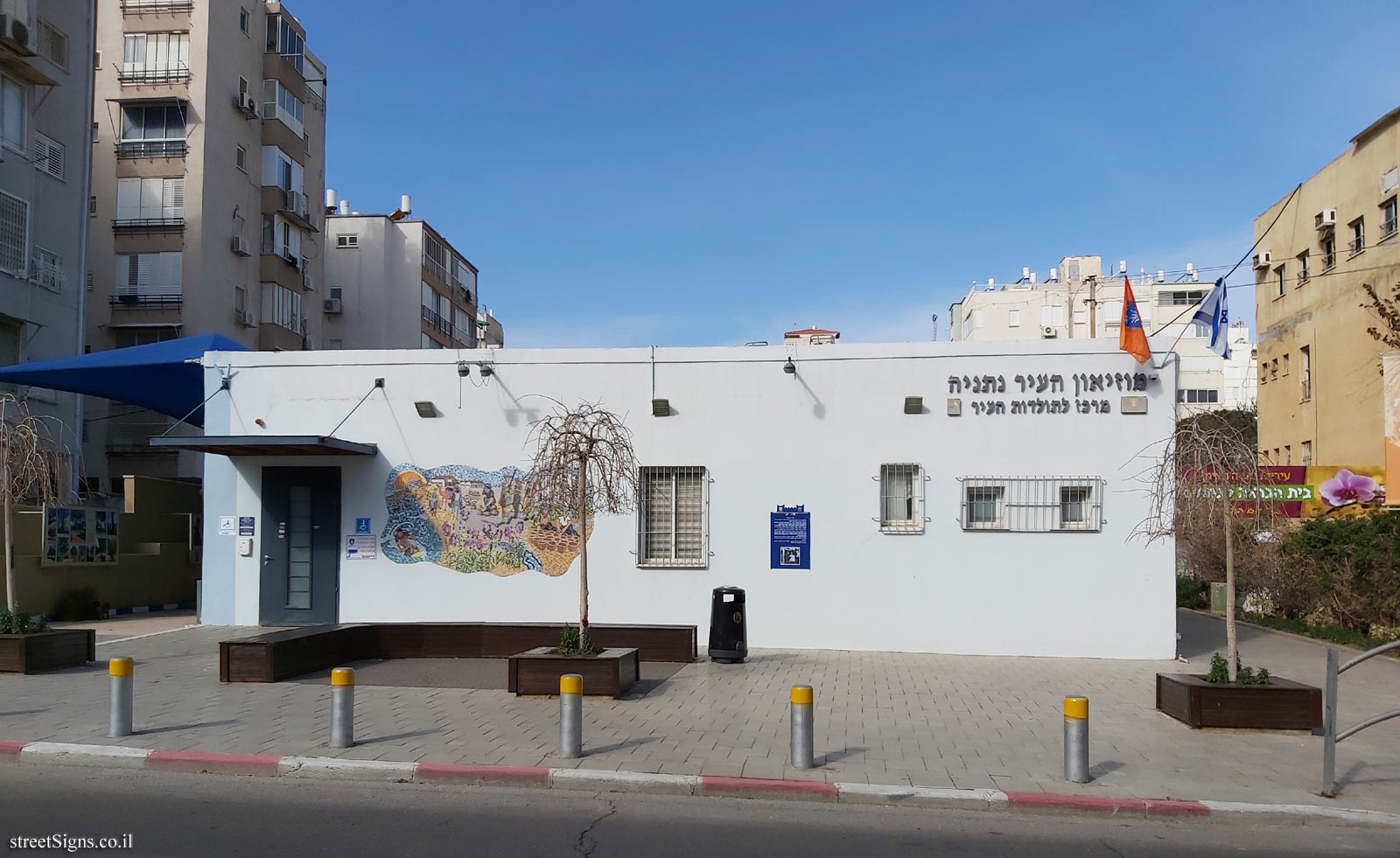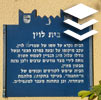The sign shape is square but its head is designed according to the silhouette of the old building of the Gymnasia Herzliya, which serves as a logo of the Council for the Preservation of Heritage Sites in Israel
The building was photographed that day
 Click for a larger image Translation of the text on the sign
Click for a larger image Translation of the text on the sign:
Symbol of the Council for the Preservation of Israeli Heritage Sites
Netanya city emblem
The emblem of the Ministry of Culture and Sport
Symbol of the Netanya Cultural Hall
"Ora" house In this building, the "Ora" house, was a weaving workshop for blind girls living in the pioneering house next door.
The building was inaugurated in 1958, but the girls’ training courses for the weaving profession began as early as the 1950s.
The workshop was established on the initiative of the League of Women for Israel (LNI) and in cooperation with the Ministry of Relief.
A sewing workshop was set up next to the factory, where cloths, tablecloths, linen, cloths, decorative items and more were prepared from the fabrics that were woven in the workshop. From time to time, exhibitions and fairs were held. Homemade weaving was sold throughout the country and abroad. In his good days, there were about fifty employees.
The plant served as an example and exemplary place for blind rehabilitation. It won the Kaplan Award for his activities and became a pilgrimage spot for guests and official visitors.
The factory was closed in the early 1990s, and today the building serves as a museum of the history of the city of Netanya.

 Click for a larger image
Click for a larger image  Click for all signs belonging to Heritage Sites in Israel
Click for all signs belonging to Heritage Sites in Israel
 275 Meter |
275 Meter |  613 Meter |
613 Meter |  1.31 Km |
1.31 Km |  1.78 Km |
1.78 Km |  4.73 Km
4.73 Km